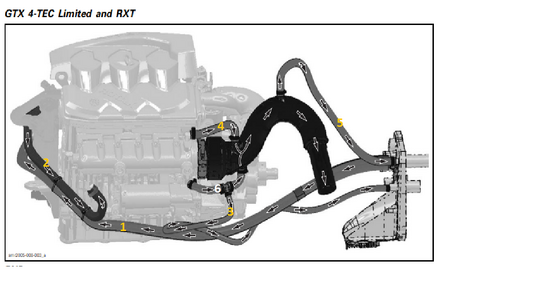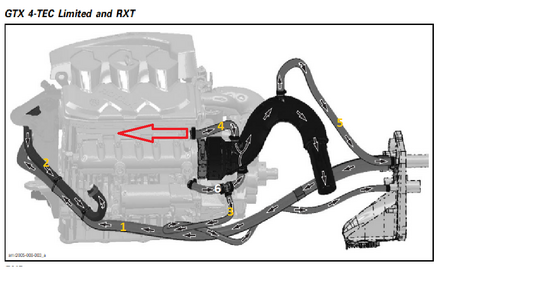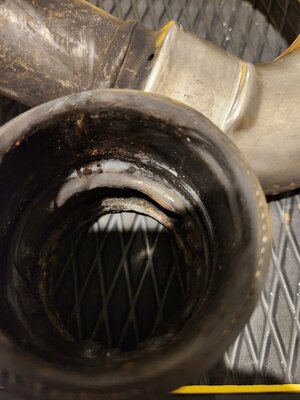Hi team; I have a 2006 Seadoo GTX 185HP (Supercharged). I am getting an overheating after running. To check this I have removed jet unit and checked the open circuit cooling intake and correct fitment of RED flow restrictor. I then went inside and checked the hose to the front of manifold. I then blew through manifold and could feel air at hose flush port, If I squeezed that hose the air blows right through to exhaust outlet. Therefore no blockage in open loop system. The only part I am not sure of is the hose flush line has no one way valve so when under normal operation closed water is taken in from jet unit flows to front of manifolds, leaves manifold through two small hoses to the stainless inlet pipe and here it has two options, exit via flushing port or continue through stainless pipe to small holes where it joins exhaust gas. I was thinking the flush should be one way so that in normal operation all manifold cooling passes to the exhaust. When I flush with hose most water exits the ski through the intake of the jet unit (normal closed cooling inlet) with the balance coming from exhaust port. Again confirms all OK but as on flushing hose removes the possible back flow issue.
On the closed cooling side when running the expansion tank warms up especially the little upper return hose and the ride plate gets hot too. Its never ejected any coolant from this system.
I guess I am looking at 3 possible issues:-
1. the hose flush should have a one way valve and not enough water goes to exhaust in normal operation as it exits the flush line
2. the exhaust temp sensor is working but not reading correctly, if I unplug i get an alarm
3. the little holes in the stainless exhaust exit pipe may be partially blocked
Any help anybody has with this would be much appreciated, thankyou
On the closed cooling side when running the expansion tank warms up especially the little upper return hose and the ride plate gets hot too. Its never ejected any coolant from this system.
I guess I am looking at 3 possible issues:-
1. the hose flush should have a one way valve and not enough water goes to exhaust in normal operation as it exits the flush line
2. the exhaust temp sensor is working but not reading correctly, if I unplug i get an alarm
3. the little holes in the stainless exhaust exit pipe may be partially blocked
Any help anybody has with this would be much appreciated, thankyou






